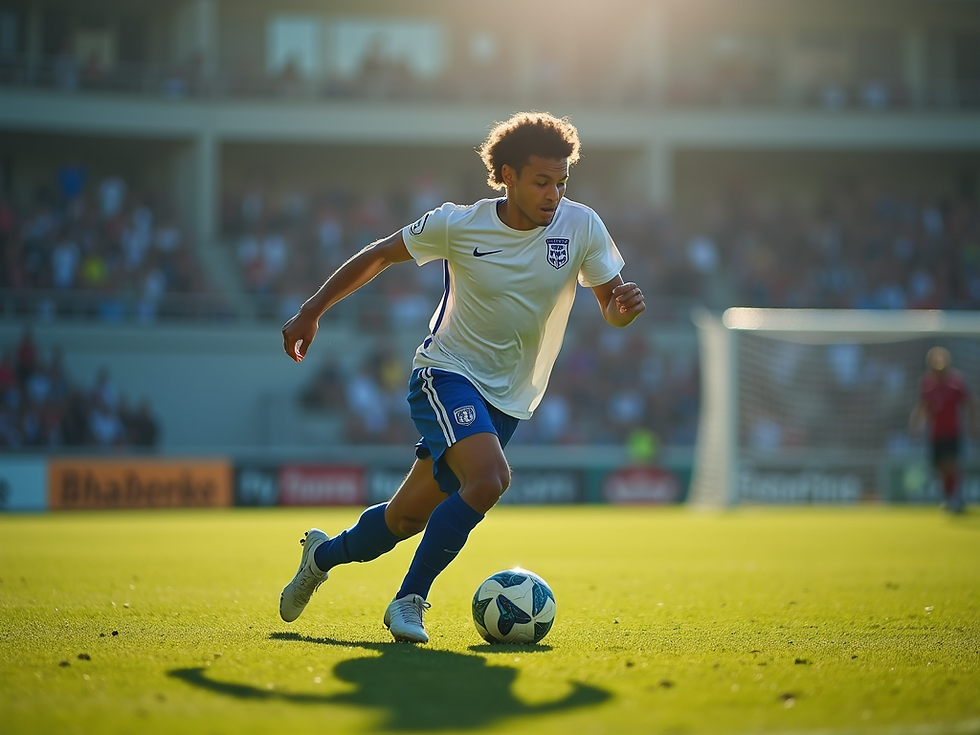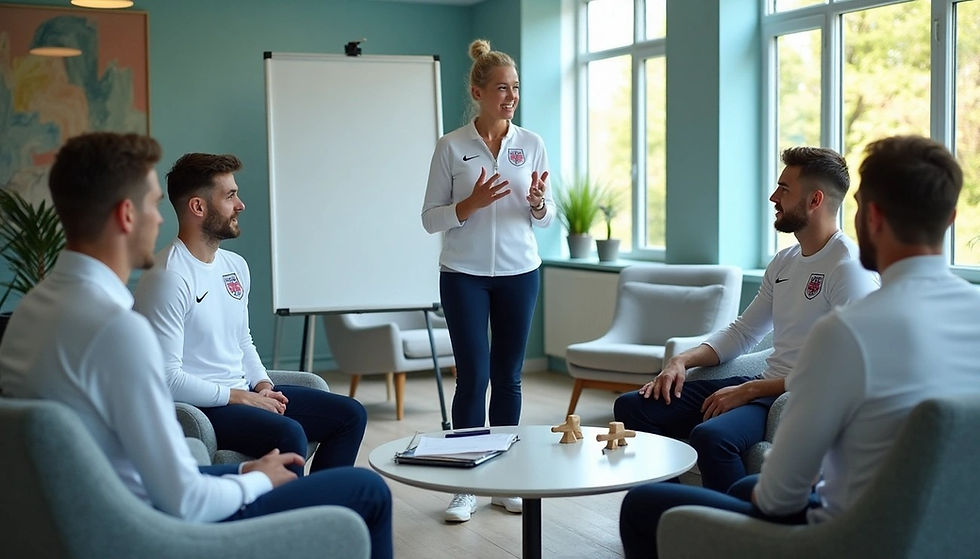Self-Confidence in Sport: Understanding and Building Mental Strength
- Dr Paul McCarthy

- Aug 7
- 4 min read
Introduction
Self-confidence in sport represents one of the most crucial psychological factors separating good athletes from great ones. This comprehensive guide explores what sports confidence is, why it matters, and provides actionable strategies to develop this essential mental skill.
What Is Self-Confidence in Sport?
Self-confidence in sport is defined as an athlete’s belief in their ability to perform well in competitive situations. It differs from self-efficacy, which focuses on belief in one’s ability to succeed in specific situations rather than general athletic ability .
Athletes with high levels of sports confidence typically:
Approach challenges with positive expectations
Maintain focus during pressure situations
Recover quickly from setbacks
Set more ambitious goals
Persist longer when facing obstacles

The Science Behind Sports Confidence
Research consistently demonstrates the significant impact of self-confidence on athletic performance:
A meta-analysis of 44 studies revealed a moderate positive correlation (r = 0.31) between pre-event self-efficacy and sports performance
This correlation is stronger among elite athletes (r = 0.40) compared to sub-elite athletes (r = 0.28)
Impact varies by sport type:
Closed-skill sports (golf, archery): r = 0.37
Open-skill sports (basketball, soccer): r = 0.23
A study with 880 athletes demonstrated a significant positive association between self-efficacy and sports performance (β = 0.57, p < 0.001)
Practical Techniques to Build Self-Confidence
1. Positive Self-Talk Framework
Self-talk is a powerful technique for boosting confidence before and during competition .
Implementation Plan:
Identify negative patterns: Record your thoughts during practice and competition
Create replacement statements: For each negative thought, develop a positive alternative
Practice regularly: Incorporate these statements into your training routine
Sample Self-Talk Replacements:
2. Visualization Exercise Protocol
Visualization is one of the most effective techniques for building sports confidence .
10-Minute Daily Visualization Routine:
Find a quiet space and comfortable position
Take 5 deep breaths to center yourself
Imagine yourself in your competitive environment
Create detailed mental images of executing skills perfectly
Incorporate all senses:
What do you see? (colors, environment, movement)
What do you hear? (crowd, coach, teammates)
What do you feel? (muscle sensations, equipment, emotions)
Experience the positive emotions associated with success
Visualize overcoming obstacles successfully
End with an image of accomplishment
For maximum effectiveness, practice this routine 3-5 times weekly, especially before competitions.
3. Success Journal Method
Maintaining a record of achievements helps build a foundation of confidence .
Implementation Steps:
Get a dedicated notebook or digital document
After each practice or competition, record:
Three things that went well
One skill that improved
One moment you felt confident
Review your journal before competitions
Track patterns of success over time
Sample Success Journal Entry Template:
Date: [Date]
Practice/Competition: [Description]
What Went Well:
1. [Accomplishment 1]
2. [Accomplishment 2]
3. [Accomplishment 3]
Skill Improvement:
[Describe specific improvement in technique or ability]
Confidence Moment:
[Describe a moment when you felt particularly confident]
Next Focus:
[What you want to work on next]
4. Strategic Goal-Setting Framework
Proper goal-setting provides direction and benchmarks for building confidence .
Three-Tier Goal System:
Implementation Tips:
Set goals that are Specific, Measurable, Achievable, Relevant, and Time-bound (SMART)
Create both short-term and long-term targets
Review and adjust goals regularly
Celebrate achievements at each level

Strategies for Coaches to Build Athlete Confidence
Coaches play a crucial role in developing self-confidence in sport among their athletes .
Practical Coaching Approaches:
Document preparation efforts: Create training logs that highlight progress and accomplishments
Implement confidence-building feedback:
Use the 3:1 ratio (three positive comments for every corrective one)
Focus feedback on specific behaviors rather than general performance
Highlight improvement rather than just results
Model confident behavior: Demonstrate composed, positive responses to setbacks
Create confidence-building practice environments:
Design progressive challenges that build success
Simulate competition pressure in controlled settings
Celebrate both effort and achievement
Learning from Elite Athletes
Professional athletes provide valuable examples of how self-confidence impacts performance .
Key Lessons:
Venus Williams: Maintained self-belief despite age-related doubts, focusing on building mental strength rather than limitations
Michael Jordan: Used rejection (being cut from high school team) to fuel determination
Serena Williams: Demonstrated how confidence helps overcome physical setbacks
Bethany Hamilton: Showed how self-belief can help athletes overcome even traumatic injuries
Confidence Recovery Protocol
Even the most confident athletes experience setbacks. This recovery protocol helps rebuild confidence after disappointments .
5-Step Recovery Process:
Allow processing time: Give yourself 24 hours to experience emotions
Objective analysis: Identify specific factors that contributed to the outcome
Extract lessons: Determine what can be learned and applied
Create an improvement plan: Develop specific actions to address weaknesses
Visualization reset: Mental rehearsal of successful future performances
Conclusion on Building Mental Strength
Self-confidence in sport represents a powerful force in athletic performance, with research clearly demonstrating its significant impact. Through techniques like positive self-talk, visualization, and proper goal-setting, athletes at all levels can enhance their mental strength and unlock their full potential.
Remember that confidence isn’t about never experiencing doubt—it’s about having the tools to manage those doubts effectively. By implementing the strategies outlined in this guide, you can develop the self-confidence needed to perform at your best when it matters most.







